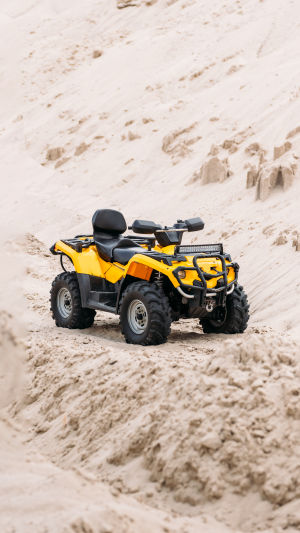In the era of continuous advancements in automobile technology, the emergence of all-terrain vehicles (ATVs) as a novel form of off-road transportation has sparked considerable interest.
The unique design, flexibility, and adaptability of ATVs have captivated enthusiasts, prompting a crucial question: Can all-terrain vehicles potentially replace traditional off-road vehicles in the future?
This article delves into the technical characteristics, usage scenarios, security considerations, and future development trends of both types of vehicles, providing a comprehensive perspective on their potential coexistence or competition.
Technical Characteristics Comparison:
a. ATV Flexibility:
All-terrain vehicles, with their lightweight body design and flexible suspension systems, excel at adapting to various terrains, including deserts, mountains, and snow. This flexibility makes ATVs exceptionally adept at navigating tight and rugged terrain, catering to adventure seekers and outdoor enthusiasts.
Conversely, traditional off-road vehicles prioritize stability, utilizing heavier bodies and reinforced chassis structures, particularly suitable for extreme off-road conditions such as steep mountain trails and muddy swamps.
b. Speed and Power Performance:
Traditional off-road vehicles boast powerful engines and high-torque transmission systems, ensuring optimal performance in high-speed driving and challenging terrains like steep inclines.
On the other hand, the lightweight design and simpler power transmission systems of ATVs make them suitable for low-speed driving and technical off-road scenarios. Despite their lower speed and power performance, ATVs shine in narrow and complex terrains due to their unparalleled flexibility.
Differences in Usage Scenarios:
All-terrain vehicles are especially well-suited for recreation and entertainment. Their maneuverability and flexibility make them ideal for outdoor activities, providing a unique off-road experience across diverse terrains.
Traditional off-road vehicles, while still catering to leisure and entertainment markets, find more prevalent use in long-distance travel and family outings due to their comfort and stability, ensuring a smooth driving experience across various road conditions.
Security Considerations:
a. Stability:
Traditional off-road vehicles prioritize stability by employing heavier bodies and reinforced chassis structures. This design significantly reduces the risk of rollovers and enhances occupant safety.
In contrast, the lightweight design of ATVs may compromise stability, especially at high speeds or in extreme off-road conditions. However, some high-end ATV models integrate advanced suspension systems and body stabilization technologies to mitigate stability concerns.
b. Safety Equipment:
Traditional off-road vehicles are typically equipped with comprehensive safety features, including airbags and anti-lock braking systems (ABS), enhancing occupant safety during accidents.
While ATVs generally have simpler safety equipment, some high-end models incorporate advanced safety technologies, such as anti-lock braking systems and traction control, to improve safety during off-roading.
Future Development Trends and Challenges:
As technology advances, the convergence of all-terrain vehicles and traditional off-road vehicles is foreseeable.
ATVs may integrate more advanced powertrains and safety technologies to enhance versatility, while traditional off-road vehicles might adopt lightweight designs and flexible chassis structures to improve maneuverability.
Despite the emerging dominance of ATVs in the market, the distinct design and performance differences between the two suggest that they may coexist, each catering to specific markets and user preferences.
In conclusion, all-terrain vehicles bring unique advantages in terms of flexibility and maneuverability. However, traditional off-road vehicles maintain their dominance in specific areas, driven by stability, load-carrying capacity, and ride comfort.
The future may witness a harmonious balance achieved through technological integration, market competition, and adherence to regulations and environmental standards, thereby fostering the concurrent development of both types of off-road vehicles.





